#Aswan High Dam
Explore tagged Tumblr posts
Text

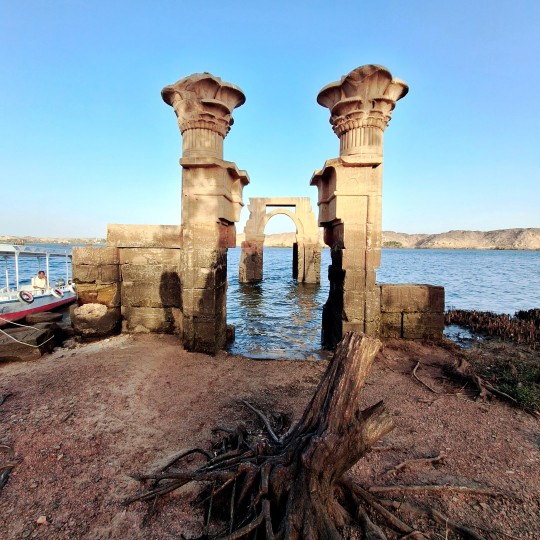
Old Philae Temple, Aswan
10 notes
·
View notes
Text
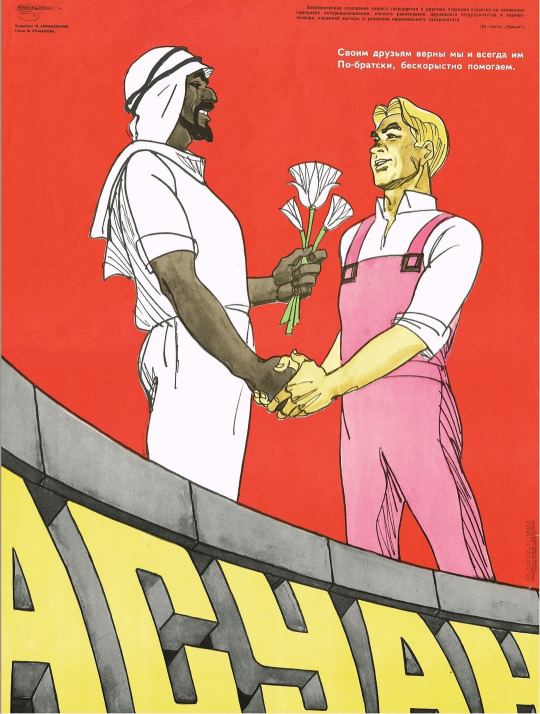
Soviet poster celebrating the construction of the Aswan High Dam, 1964, which the USSR greatly assisted in building
#*cute note here the egyptian guy is holding up a lotus flower which is commonly seen in hieroglyphs and ancient egyptian art#egypt#if anyone can translate the russian text please do#ussr
302 notes
·
View notes
Text

🏛️ Abu Simbel Temple: Then and Now 🏛️
Abu Simbel Temple, one of Egypt's most magnificent monuments, was originally constructed by Pharaoh Ramses II in the 13th century BC.
This stunning temple features colossal statues of Ramses II, intricately carved into a mountainside, symbolizing his power and divine connection.
In the 1960s, to save it from the rising waters of the Aswan High Dam, the entire temple complex was relocated to a higher ground, a remarkable feat of modern engineering.
Today, Abu Simbel continues to awe visitors with its grandeur and historical significance, standing as a testament to ancient Egyptian ingenuity and resilience.
#ancient egypt#kemet#kemetic#egypt#egyptian art#pharaoh#pharaonic#ramesses ii#ramesses the great#ramesside
126 notes
·
View notes
Note
Got a write up on high modernism, or someone else's you would recommend?
I think James C. Scott is the one to coin the term? Where I got it from anyway. You can probably best understand as a) a deep abiding faith capital-P Progress and a teleological view of history and civilization, b) a cult of experts and technocracy, with academic/technical knowledge prized over custom and tradition and 'uneducated' popular opinion and c) a program of using technology and scientific organization to improve the world (which as a necessary precondition requires the world been rationalized and made legible to bureaucratic understanding and scientific optimization.
Though really I use the tag a) with a wildly variable amount of irony depending on what I'm tagging and b) mostly as, like, a vibe.
Uh, think, aesthetically: Brasilia, the Aswan Dam, the Turkestan-Siberian Railway and the Interstate Highway System - overmighty civil services and fordist/state capitalist economics - mass electrification and literacy programs as wholesale national missions - 'towers and flowers' urban design and high speed rail as prestige project - 'measuring the marigolds' and skepticism/demystification as ideological project - land reform but the type that ends up empowering technical experts and state managers as much/more than the peasant farmers - the heroic age of science - the Green Revolution - Better Living Through Chemistry - your first reaction to someone talking about 'the good old days' being infant mortality/forced marriage/smallpox/blood feuds - thinking a world where everything about the world is legible and rationally ordered as an impossible utopia and not a depressive nightmare.
61 notes
·
View notes
Text
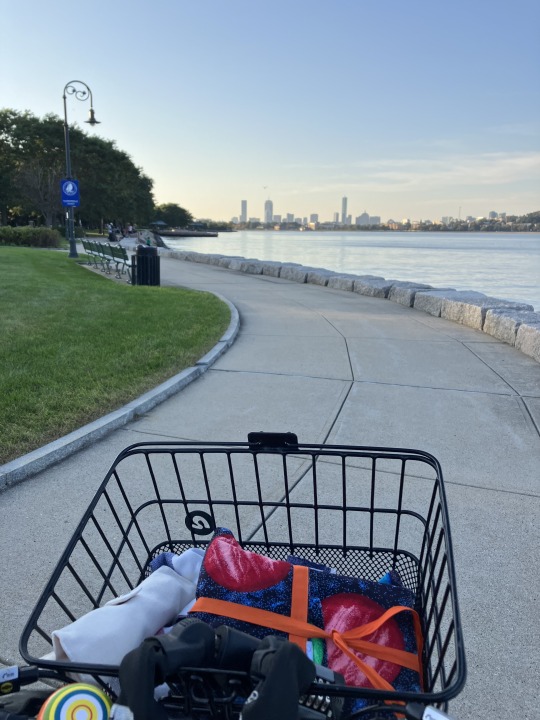
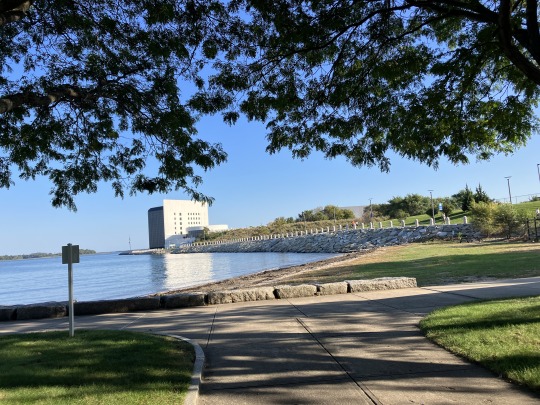
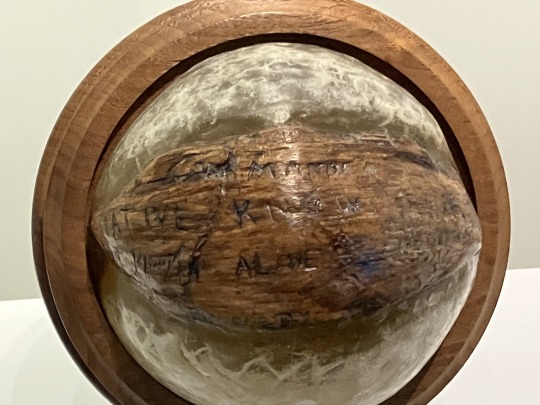
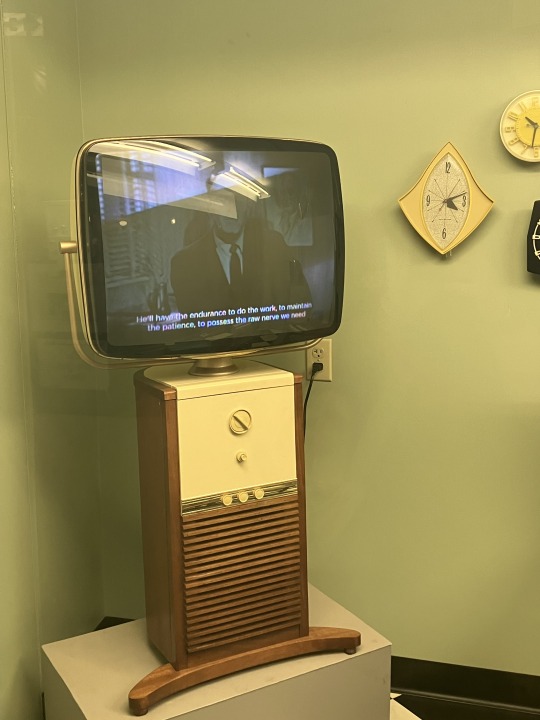
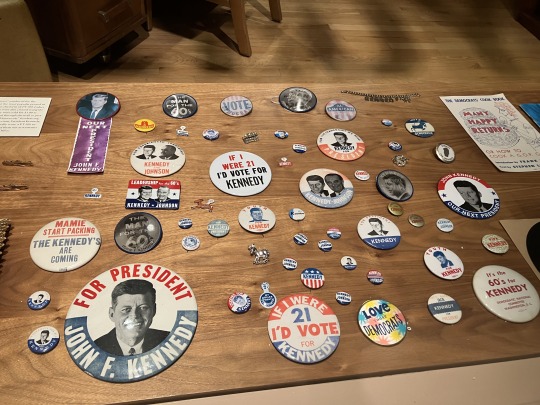
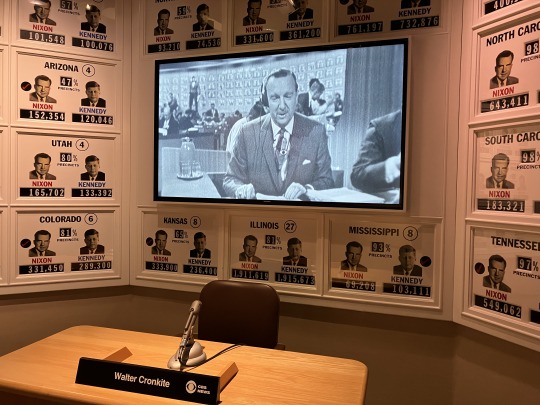
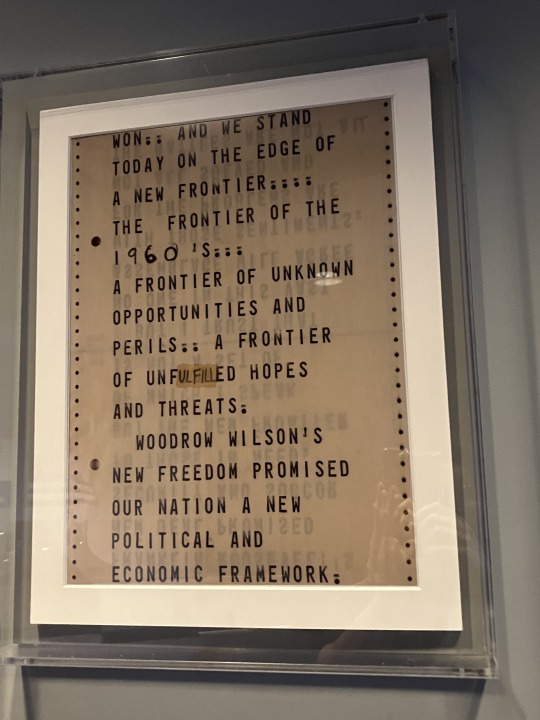
I took advantage of this last gasp of summer weather to do something I’d wanted to do for a while and bike the Harborwalk to the @jfklibrary.
I hadn’t been since I was in undergrad, and while the Freedom 7 capsule is no longer on display there because the ten-year loan from the Naval Academy is up, it’s still a wonderful museum in a magnificent location.
I only had an hour to explore so I had to hurry, but I still took a ton of pics in the space exhibit:

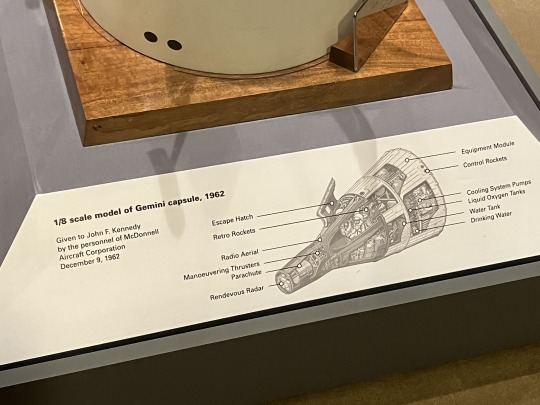
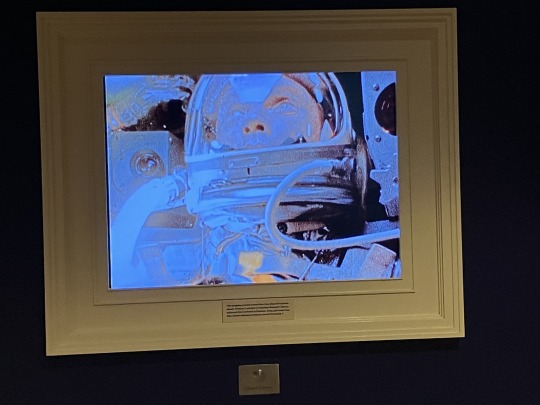

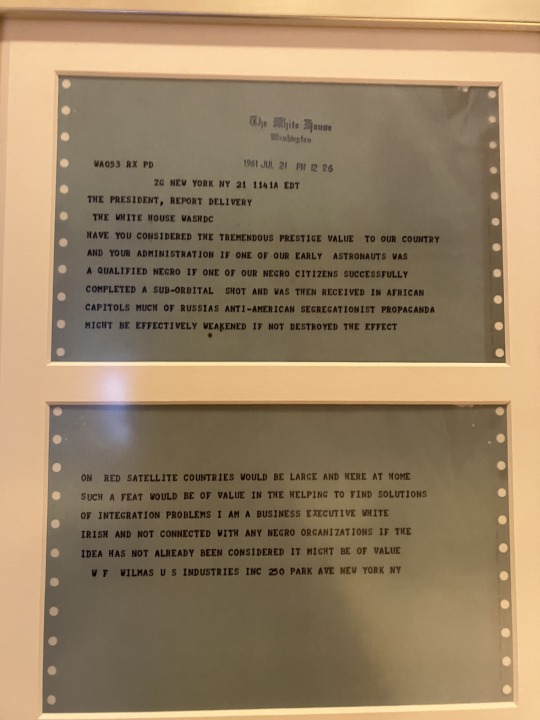
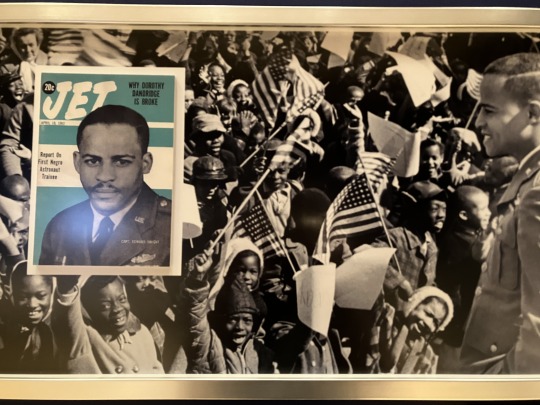
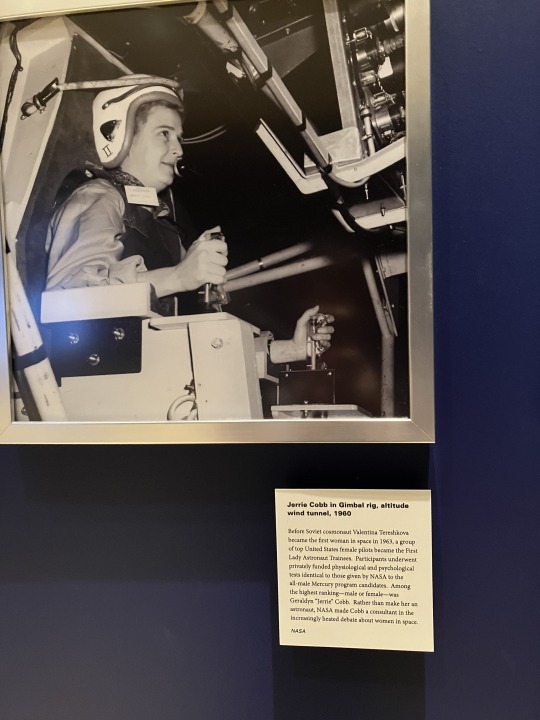
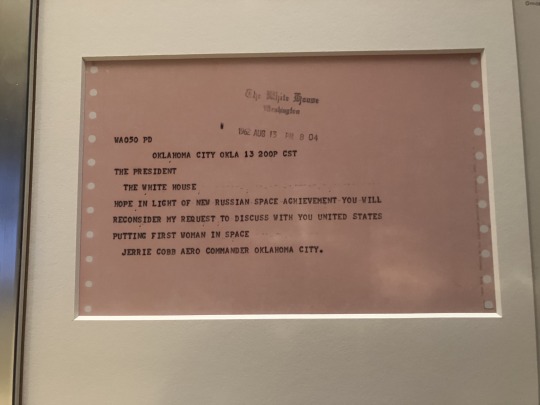
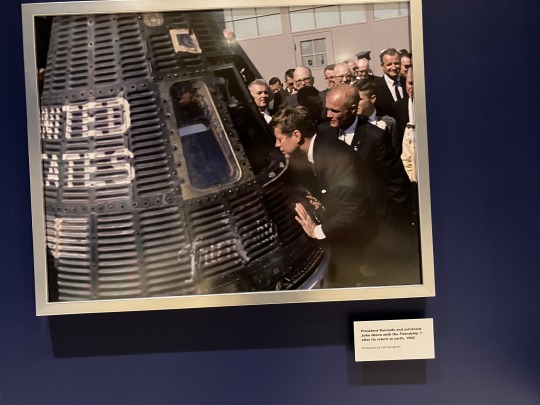

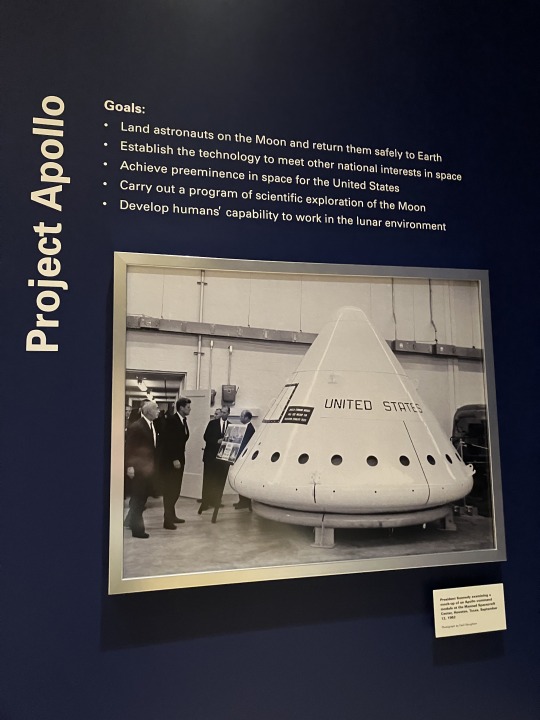
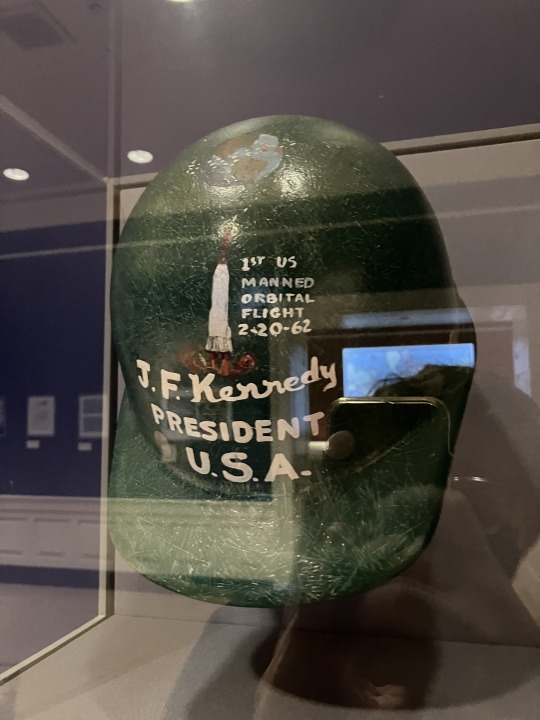
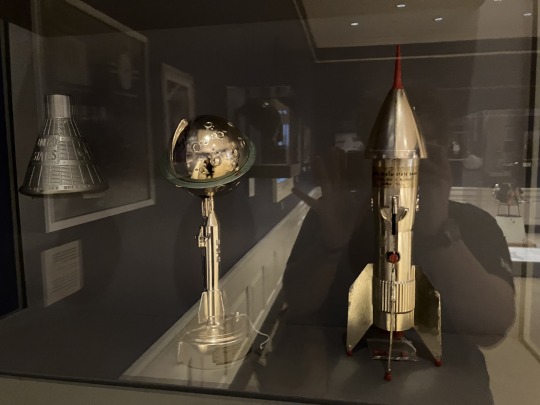
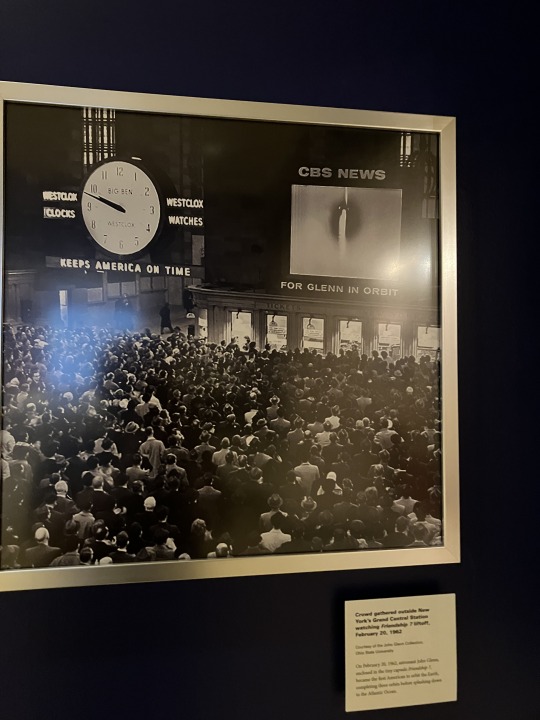
Also, the Aswan High Dam project:
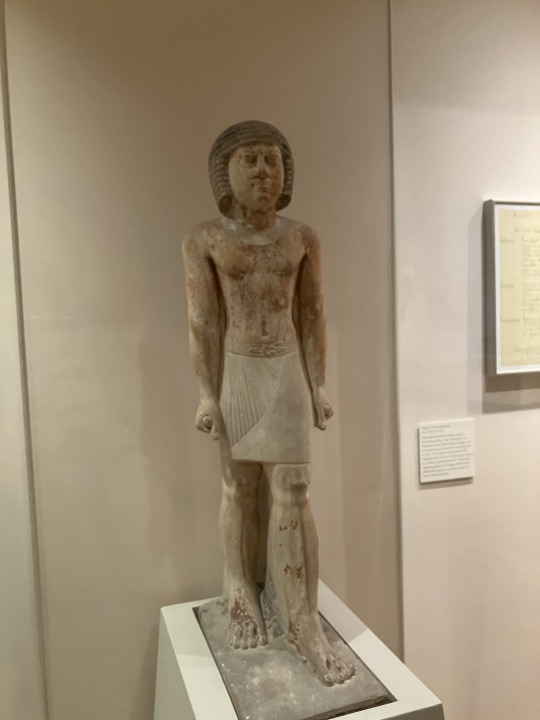
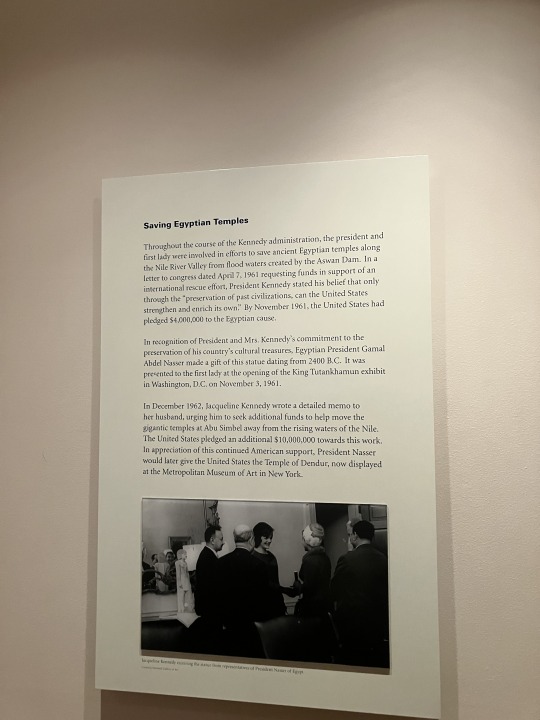
I’m curious about this photo in the Oval Office replica room, it LOOKS like a J-Class racer from the 1900s-1930s (and it really only could be an original J-Class in JFK’s time, the restorations and new builds didn’t start until the 1980s), maybe from the Rosenfeld collection, but I wonder which one it might be:
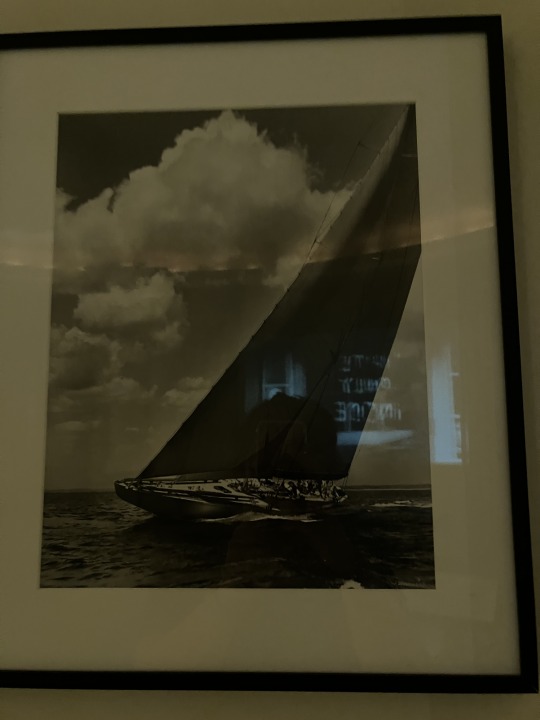



The museum shop was closed by the time I finished with the exhibits, but I guess having a replica “If I were 21 I’d vote for Kennedy” campaign button to wear isn’t as funny now because I wouldn’t be an actual 19-year-old wearing it anymore.
I want to come back and have more time to look through the WWII special exhibit, but I’m so glad I finally got to visit at all.
9 notes
·
View notes
Text
Egypt Easter Tours & Holidays 2024/2025




Egypt is a fascinating destination with a rich history and cultural heritage, making it an excellent choice for Easter tours and holidays. While I can't provide specific information about tours and holidays for the year 2024/2025 since my knowledge is based on information up until September 2021, I can give you a general overview of what you can expect when planning an Easter trip to Egypt.


Cairo: Start your journey in the capital city, Cairo, which is home to iconic landmarks such as the Pyramids of Giza, the Sphinx, and the Egyptian Museum. Explore the ancient wonders of the pyramids, learn about the pharaohs, and immerse yourself in the vibrant atmosphere of this bustling metropolis.
Luxor: Travel south to Luxor, often referred to as the world's greatest open-air museum. Luxor is famous for its temples and ancient sites, including the Karnak Temple Complex and the Valley of the Kings. Take a cruise along the Nile River and witness the breathtaking beauty of the temples and tombs that line its banks.
Aswan: Continue your journey to Aswan, another enchanting city located on the Nile River. Visit the majestic Aswan High Dam, explore the Philae Temple, and take a boat ride to the picturesque Temple of Kom Ombo. Aswan is also a gateway to the stunning Abu Simbel temples, which are a must-see if you have the time.
Nile River Cruises: Consider embarking on a Nile River cruise, which is a popular way to explore Egypt's ancient treasures while enjoying the comfort of a luxury cruise ship. Cruises typically range from a few days to a week, allowing you to visit multiple sites along the Nile and experience the beauty of the river.
Red Sea Resorts: If you're looking to relax and enjoy some beach time during your Easter holiday, Egypt's Red Sea resorts offer stunning beaches and world-class diving and snorkeling opportunities. Destinations such as Hurghada and Sharm El Sheikh are known for their pristine waters, coral reefs, and vibrant marine life.

Reach out to us:
Emails
WhatsApp: (1553119249
#nature#nct 127#nasa#naruto#natural hair#neil gaiman#travel to egypt#traveltourism#travel 2024#traveling#travel#ancient egypt#egyptian
2 notes
·
View notes
Text
Never mind Cleopatra – what about the forgotten queens of ancient Nubia?

by Yasmin Moll, University of Michigan
Jada Pinkett Smith’s new Netflix documentary series on Cleopatra aims to spotlight powerful African queens. “We don’t often get to see or hear stories about Black queens, and that was really important for me, as well as for my daughter, and just for my community to be able to know those stories because there are tons of them,” the Hollywood star and producer told a Netflix interviewer.
The show casts a biracial Black British actress as the famed queen, whose race has stirred debate for decades. Cleopatra descended from an ancient Greek-Macedonian ruling dynasty known as the Ptolemies, but some speculate that her mother may have been an Indigenous Egyptian. In the trailer, Black classics scholar Shelley Haley recalls her grandmother telling her, “I don’t care what they tell you in school, Cleopatra was Black.”
These ideas provoked commentary and even outrage in Egypt, Cleopatra’s birthplace. Some of the reactions have been unabashedly racist, mocking the actress’s curly hair and skin color.
Egyptian archaeologists like Monica Hanna have criticized this racism. Yet they also caution that projecting modern American racial categories onto Egypt’s ancient past is inaccurate. At worst, critics argue, U.S. discussions about Cleopatra’s identity overlook Egyptians entirely.
In Western media, she is commonly depicted as white – most famously, perhaps, by screen icon Elizabeth Taylor. Yet claims by American Afrocentrists that current-day Egyptians are descendants of “Arab invaders” also ignore the complicated histories that characterize this diverse part of the world. A relief depicting the Nubian Kandake Amanitore in the Egyptian Museum in Berlin. Sven-Steffen Arndt/Wikimedia Commons, CC BY-SA
Some U.S. scholars counter that ultimately what matters is to “recognize Cleopatra as culturally Black,” representing a long history of oppressing Black women. Portraying Cleopatra with a Black actress was a “political act,” as the show’s director put it.
Ironically, however, the show misses an opportunity to educate both American and Egyptian audiences about the unambiguously Black queens of ancient Nubia, a civilization whose history is intertwined with Egypt’s. As an anthropologist of Egypt who has Nubian heritage, I research how the stories of these queens continue to inspire Nubians, who creatively retell them for new generations today.
The one-eyed queen
Nubians in modern Egypt once lived mainly along the Nile but lost their villages when the Aswan High Dam was built in the 1960s. Today, members of the minority group live alongside other Egyptians all over the country, as well as in a resettlement district near the southern city of Aswan.
Growing up in Cairo’s Nubian community, we children didn’t hear about Cleopatra, but about Amanirenas: a warrior queen who ruled the Kingdom of Kush during the first century B.C.E. Queens in that ancient kingdom, encompassing what is now southern Egypt and northern Sudan, were referred to as “kandake” – the root of the English name “Candace.” A comic inspired by the story of Amanirenas. Chris Walker, Creative Director, Lymari Media/Wikimedia Commons, CC BY-SA
Like Cleopatra, Amanirenas knew Roman generals up close. But while Cleopatra romanced them – strategically – Amanirenas fought them. She led an army up the Nile about 25 B.C.E. to wage battle against Roman conquerors encroaching on her kingdom.
My own favorite part of this story of Indigenous struggle against foreign imperialism involves what can only be characterized as a power move. After beating back the invading Romans, Queen Amanirenas brought back the bronze head of a statue of the emperor Augustus and had it buried under a temple doorway. Each time they entered the temple, her people could literally walk over a symbol of Roman power.
That colorful tidbit illustrates those queens’ determination to defend their autonomy and territory. Amanirenas personally engaged in combat and earned the moniker “the one-eyed queen,” according to an ancient chronicler of the Roman Empire named Strabo. The kandakes were also spiritual leaders and patrons of the arts, and they supported the construction of grand monuments and temples, including pyramids. A pyramid of Kandake Amanitore amid the Nubian pyramids of Meroe. mtcurado/iStock via Getty Images Plus
Interwoven cultures and histories
When people today say “Nubia,” they are often referring to the Kingdom of Kush, one of several empires that emerged in ancient Nubia. Archaeologists have recently started to bring Kush to broader public attention, arguing that its achievements deserve as much attention as ancient Egypt’s.
Indeed, those two civilizations are entwined. Kushite royals adapted many Egyptian cultural and religious practices to their own ends. What’s more, a Kushite dynasty ruled Egypt itself for close to a century.
Contemporary Nubian heritage reflects that historical complexity and richness. While their traditions and languages remain distinctive, Nubians have been intermarrying with other communities in Egypt for generations. Nubians like my mother are proudly Egyptian, yet hurtful stereotypes persist. Hafsa Amberkab, right, and Fatma Addar, Nubian Egyptian women who compiled a dictionary, show off a Nubian lexical chart near Aswan in upper Egypt. Khaled Desouki/AFP via Getty Images
Today, some Black Americans embrace Cleopatra as a powerful symbol of Black pride. But the idea of ancient Nubia as a powerful African civilization also plays a symbolic role in contemporary Black culture, inspiring images in everything from cosmetics to comics.
Egyptian voices
Researchers do argue about Cleopatra’s heritage. U.S. conversations about her, however, sometimes reveal more about Western racial politics than about Egyptian history.
In the 19th century, for example, Western interest in ancient Egypt took off amid colonization – a fascination called “Egyptomania.” Americans’ fixation with the ancient civilization reflected their own culture’s anxieties about race in the decades after slavery was abolished, as scholar Scott Trafton has argued.
A century later, a 1990s advertisement for a pale-colored doll of queen Nefertiti sparked debate in the U.S. about how to represent her race.
Nefertiti’s bust – one of the most famous artifacts from ancient Egypt – is on display at a German museum. Egypt has called for the artifact’s return for close to a hundred years, to no avail. Even Hitler took a personal interest in the bust, declaring that he “will not renounce the queen’s head,” according to archaeologist Joyce Tyldesley. The famed and fought-over bust of Queen Nefertiti. Francis G. Mayer/Corbis/VCG via Getty Images
Even today, contemporary Egyptian perspectives are almost absent in Western depictions of ancient Egypt. Only one Egyptian scholar is interviewed in the new Netflix series’ four episodes, as he himself notes, and he is employed not by an Egyptian university, but by a British one.
For many Egyptians, this lack of representation rehashes troubling colonial dynamics about who is considered an “expert” about their past. The Netflix series “was made and produced without the involvement of the owners of this history,” argues the Egyptian journalist Sara Khorshed in a review of the series.
To be sure, there is anti-Black bias in Egyptian culture, and some of the social media reaction has been slur-filled and racist. Educating people about the stories of Nubian queens like Amarinenas might be a way to encourage a more inclusive understanding of who is Egyptian.
Yet I believe Egyptians’ frustrations about portrayals of Cleopatra also reflect long-standing concerns that their own understandings of their past are not taken seriously.
That includes Black Egyptians, like my mother. When I asked her if she planned to see the Cleopatra series, she shrugged. She already knows that queen’s story well from its many portrayals on screen, whether in Hollywood films or Egyptian ones.
“I will wait for the series on Amanirenas,” she said.
Yasmin Moll, Assistant Professor of Anthropology, University of Michigan
This article is republished from The Conversation under a Creative Commons license. Read the original article.
#media#television#anthropology#race#pop culture#egypt#netflix#ancient egypt#ancient civilizations#documentary film#film#TV#cleopatra#religion
9 notes
·
View notes
Text
True dreams of the Believers - In Sha Allāh - A great calamity hitting Misr - Egypt

**Dream text** :
I was inside my house when I heard screaming. I came out and saw the people in total confusion, as water was coming from the south, and my mother was sitting with a child, a small one who is still breastfeeding. I took the child in my hands and my mother on my back and we just fled, ahead of the water that was coming our way. My sister was with us, she said : " It is obvious that the dam capsized". And it came to my mind that this was the Aswan high dam she was talking about.
Interpretation by Muhammad M. from Bilād al-Maghrib, mu'abbir following Qur'an and Sunnah in dream interpretation methodology :
This dream appears very much to be a true dream. There is Tawātur (similar dreams repeated across people, unrelated).
It is also a رؤية عامة - ru'yah ''āmmah- dream that is general, not specific to the dreamer. It is about events that will affect the people of a certain area. Here the area is large and includes Sudān as well as Misr - Egypt.
There are 4 qarinā : screaming of the people, and their confusion, secondly : the mother carrying the child, thirdly : the water is coming from the South, fourthly: the capsizing of the High Aswan dam.
3 of them are to be taken على ظاهرها - 'alā dhāhirihā - as they appear - meaning these are not symbols to interpret. Only one qarinā should be interpreted here, and it's the one about the mother. The mother here symbolizes Misr - Egypt, the country. That's because the Egyptians call their country Umm ad-Dunya (mother of the Dunya). As for the child here, it symbolises the future of Misr. Hence this means this calamity will have a heavy bearing on the future of Misr - Egypt. It also means that somehow Misr will survive this calamity. There will be destruction and many deaths, however Misr will survive and that's what this second qarinā means. The water is coming from the South because the Aswan High Dam is located in the South.
The rest of the dream is clear.
Muhammad M. says that he received other dreams indicating the Aswan High Dam will be the centre of a great calamity.
There have been scientists warning about problems with the dam, already twenty years ago : "Since the High Aswan Dam was planned in 1952 until it was completed in 1970, it was associated with numerous technical, social and political problems. The side-effects of the dam after its construction until the present time are the concern of various authorities all over the world."
Hence this should not come as a surprise, says Muhammad M. : It can very well happen, and Allāh knows best
May Allāh protect Misr and Ahlu-Misr ,(the people of Misr) and the whole Ummah of Muhammad ﷺ
t.me/Truedreams_Endtimes
4 notes
·
View notes
Text
Egypt Honeymoon packages
Egypt Honeymoon packages include romantic activities such as a sunset cruise on the Nile River, exploring the ancient wonders of the pyramids hand in hand, and enjoying a scenic hot air balloon ride over Luxor. Couples can also indulge in a luxurious spa day in a five-star resort along the Red Sea or stroll through the vibrant markets of Cairo. These experiences create unforgettable memories in one of the world's most enchanting destinations.
Honeymoon Vacations To Cairo & Alexandria Cairo, Egypt's vibrant capital, is home to the iconic Pyramids of Giza and the enigmatic Sphinx, drawing millions of visitors eager to witness these ancient wonders. The bustling Khan El Khalili bazaar offers a unique shopping experience with its narrow alleys filled with traditional crafts and aromatic spices. Additionally, the Egyptian Museum houses an extensive collection of artifacts, including the treasures of Tutankhamun, providing a fascinating glimpse into the country's rich history.
Honeymoon Package In Cairo and Hurghada Cairo offers a rich tapestry of history and culture, with its ancient pyramids, bustling bazaars, and vibrant local life. In contrast, Hurghada provides a more laid-back experience with its stunning beaches, world-class diving spots, and a focus on relaxation and leisure activities. Together, these cities offer a perfect blend of exploration and relaxation for honeymooners seeking diverse experiences.
Cheap All Inclusive Honeymoon Packages IN EGYPToffer great value by bundling accommodations, meals, and activities into one convenient price. Couples can enjoy a stress-free vacation with no need to worry about budgeting for individual expenses. Additionally, all-inclusive packages often include unique experiences and excursions, allowing honeymooners to fully explore and enjoy their destination.
One of our Egypt Honeymoon packages
§
Honeymoon Vacations To
Cairo and Nile Cruise
If you Dreamed About A Dazzling Honeymoon
vacation, scout our Honeymoon Vacations To Cairo and Nile Cruise, Discover the
Archaeological, Historical, and Natural Beauties of Egypt, Delve Into the Rich
Mix of Cosmopolitan Cairo, and spend A Romantic Time with Your Nile Cruise
Honeymoon. The Nile Cruise Trip Combines The History with the Pleasant
atmosphere which Makes it an unforgettable Trip. Sail on board Luxor to Aswan
Cruises we can Tailor your Romantic Escape Perfectly To you Both. Find your
perfect luxury honeymoon package with Jana Tours. Our experienced team will
take care of every detail of your special holiday. Plus, you’ll enjoy the
stunning scenery of the Nile Valley and the fascinating ancient sites along the
way. Book your cruise today and make your dream honeymoon come true!
§ Day 1: Arrive in Cairo.
§ Upon arrival at Cairo airport, you will find a Jana
Tours representative waiting for you with a sign with your name then you will
be transferred to the hotel for check-in and overnight. You can try (optional
tours) such as a dinner cruise in Cairo or a sound and light show.
§ Day 2: Cairo Tours
§ Pick up from
the hotel by our guide and start a full-day tour to visit the most famous Giza
Pyramids, then visit the Panoramic view, the great Sphinx, and the Valley
temple then transfer to the Egyptian Museum to see the famous collection of
King Tutankhamun and the other collections then transfer back to the hotel and
overnight.
§ Day 3: Aswan Tours
§ Pick up from the hotel by our representative and
transfer to Cairo airport to take the domestic flight to Aswan, arrive in Aswan
and meet our guide then start a full day tour to visit the Famous Philae temple
of the goddess Isis after that transfer to visit Aswan High Dam. The High Dam
is still the greatest achievement in the modern history of Egypt. after that
transfer to the cruise ship for the embarkation, Lunch and dinner on board and
overnight.
§ Day 4: Komombo temple
§ Pick up from
the cruise ship early morning and transfer to Abu Simbel (Optional )to visit
the great temple of King Ramses II and the small temple of his beloved queen
Nefertari after that drive back to Aswan, arrive Aswan then transfer to the
cruise ship, after lunch start sailing toward Kom Ombo, reach Kom Ombo and
visit the temple shared between 2 Gods Horus and Haroris after that back to the
cruise ship and sail toward Edfu, reach Edfu and overnight in Edfu.
§ Day 5: Edfu Temple
§ Pick up early morning from the cruise ship to visit the
Edfu temple of God Horus the most preserved temple in Egypt after that transfer
back to the cruise ship, sail again toward Esna, and cross Esna Lock after that
reach Luxor at the evening time visit the famous Luxor temple then transfer
back to the cruise ship and overnight in Luxor.
§ Day 6: west Bank Luxor
§ Pick up from
the cruise ship and transfer to the West Side of Luxor, arrive there to enjoy
the Hot Air Balloon, draft peacefully and enjoy the unforgettable scenes from
the top, must have professional Cameras for good photos by our guide then start
a full day tour to visit the West bank, Valley of the Kings “we will Enter 3
royal tombs” then visit the temple of Queen Hatshepsut temple at Dier El Bahari
and the colossi of Memnon then transfer to the cruise ship for lunch, then pick
up again at the evening time to visit the famous Karnak temples the largest
temples in the world after that transfer to Luxor airport to take the domestic
flight back to Cairo, arrive Cairo then transfer to the hotel for check-in and
overnight.
§ Day 7: Cairo Tours
§ Pick up from
the hotel by our guide and start a full-day tour to visit Old Cairo “Islamic
and Coptic Cairo” the Hanging church, Amr Ibn El Aas Mosque, and Ben Ezra
Synagogue then transfer to visit Cairo Citadel which is a great monument to
medieval warfare, and Mohamed Ali Alabaster Mosque then transfer to visit the
famous Khal El Khalili Bazaar spend free time thereafter that transfer back to
the hotel and overnight.
§ Day 8: The Final Honeymoon Vacations to Cairo and Nile
Cruise
§ Pick up from the hotel by our representative and
transfer to Cairo airport to help you with the final airport formalities to
take the flight back home.
§ The mentioned tour itinerary includes the following:
§ § Private English-speaking Egyptologist tour guide.
§ § Entrance fees to all the mentioned sites.
§ § Transport with a private A/C van to all the mentioned
sites.
§ § The service of meet and assist at the airports.
§ § 4 Nights hotel accommodation in Cairo at Hotel
with B/B Bases.
§ § 3 Nights accommodation on a 5 star deluxe cruise ship
Aswan/ Luxor on a full board bases.
§ § Domestic flight tickets from Cairo/Aswan –
Luxor/Cairo.
§ § Lunch meal during the day tour.
§ § Service charge and tax.
§ The tour itinerary not include the following
§ § Visa Entry to Egypt.
§ § Optional tours
§ § Any other items not mentioned
§
§ § Tipping Kitty.
§ For More Info
§ Website:
§
Egypt
Honeymoon Package: https://bit.ly/3JV0H9H
§ Whatsapp+201143320224
0 notes
Text
Historical Tour Packages to Egypt from India: Explore Timeless Wonders
Egypt—land of the pharaohs, pyramids, and mystical legends—has long fascinated travelers from across the globe. For Indian tourists, the allure of this ancient civilization offers a perfect mix of history, culture, and adventure. If you're someone who dreams of walking through millennia-old temples or cruising the legendary Nile, historical tour packages to Egypt from India offer a gateway to an unforgettable journey.

Why Egypt Appeals to Indian Travelers
Egypt and India share a deep-rooted history of ancient civilizations. For culturally inclined Indian travelers, Egypt is more than just a travel destination—it's a walk through time. From the majestic pyramids of Giza to the temples of Luxor and the treasures of Tutankhamun, every site tells a story etched in stone.
Moreover, Egypt offers an affordable and immersive experience, with short flight durations and visa-on-arrival options for Indian passport holders. The country is rich in sightseeing options, diverse cuisine, and warm hospitality—making it a favored destination for history lovers.
What to Expect in Historical Tour Packages to Egypt from India
Well-planned historical tour packages from India to Egypt generally include the must-visit highlights of the country, along with expert guidance and local experiences. Here's what a typical itinerary may cover:
1. Cairo – The Capital of Ancient Mysteries
Visit the iconic Pyramids of Giza, the Sphinx, and the Egyptian Museum, which houses thousands of ancient artifacts, including King Tutankhamun's golden mask.
2. Luxor – The World’s Greatest Open-Air Museum
Discover the Valley of the Kings, Karnak Temple, and Luxor Temple. These landmarks are a treasure trove for those fascinated by ancient Egyptian history.
3. Aswan – The Southern Gem
Explore the Philae Temple, Unfinished Obelisk, and the beautiful Aswan High Dam. Optional visits to Abu Simbel—a marvel carved into solid rock—are often included.
4. Nile River Cruise
A cruise between Luxor and Aswan is often the highlight of historical tour packages. It offers scenic views and onboard experiences with authentic Egyptian culture and entertainment.
Why Choose a Guided Tour Package
While Egypt can be explored independently, opting for historical tour packages to Egypt from India ensures a stress-free, well-coordinated travel experience. Here’s why it’s worth considering:
Expert Planning: Avoid logistical hassles with pre-arranged flights, transfers, and guided excursions.
Local Knowledge: Licensed Egyptologists accompany most tours, offering deep insight into ancient history and culture.
Customizable Options: Whether you're a solo traveler, couple, or family, packages are tailored to meet your comfort, pace, and interests.
Indian Traveler Friendly: Most packages cater to Indian preferences with optional Indian meals, Hindi/English-speaking guides, and easy currency exchange options.
Best Time to Visit
The ideal time to travel is from October to April, when the weather is pleasant for sightseeing. Summer months can be extremely hot, especially in desert regions like Luxor and Aswan.
Final Thoughts
Egypt is a destination where history is not confined to books—it's alive in every monument, temple, and tomb. Choosing the right historical tour package to Egypt from India turns a vacation into a life-enriching journey. With expert planning and immersive experiences, you can explore the mysteries of the ancient world without a worry.
0 notes
Text
"What do you know about the Nile River?
The Nile River is one of the most famous and historically significant rivers in the world. Here's a concise overview:
Basic Facts
Length: Approximately 6,650 km (4,130 miles), often considered the longest river in the world, although some argue the Amazon may be slightly longer.
Location: Flows through northeastern Africa, crossing 11 countries, including Uganda, South Sudan, Sudan, and Egypt, where it has played a vital role in civilization.
Sources
The Nile has two major tributaries:
White Nile – originates in Lake Victoria (Uganda, Kenya, Tanzania)
Blue Nile – begins at Lake Tana in Ethiopia
Historical Importance
Central to the development of Ancient Egyptian civilization.
Provided water for agriculture through irrigation, especially in an otherwise desert region.
Enabled transport, trade, and cultural exchange.
Modern Importance
Continues to be crucial for agriculture, drinking water, and hydroelectric power.
The construction of dams like the Aswan High Dam in Egypt and the Grand Ethiopian Renaissance Dam (GERD) in Ethiopia have made it a topic of regional politics and international negotiations.
for more information you can visit my website ; https://doonpublicschoolgorakhpur.com/
0 notes
Text
Yes, the Metropolitan Museum of Art in New York City has not just a chunk of Egyptian temple wall on display but an entire mid-sized temple. The Temple of Dendur, originally located 80 kilometres from Aswan in southern Egypt, is one of many that were moved to avoid them being flooded by the construction of the Aswan High Dam which submerged practically all of the historical Lower Nubia region.
Many temples were relocated nearby (most prominently the two massive Abu Simbel temples, moved sixty-five metres up out of the submerged area) or to museums in Egypt and Sudan, but in addition to the ones moved to places in Europe the Temple of Dendur was given to the US in 1963 (because the US paid for some of the other temple movement, and also a bunch of the funding for the dam itself). The President eventually gave it to the Metropolitan, which displays it in its own indoor gallery.
Also near the Met in Central Park is one of Cleopatra's Needles, an obelisk completely unrelated to Cleopatra that was sort-of gifted to the US due to their trade with Egypt in 1877. Since then, due to its display outside, the New York City climate has badly eroded the hieroglyphs on its surface.

This is what hieroglyphs and figures in ancient Egyptian temples looked like before their colors faded. They were recreated using a polychromatic light display at the Metropolitan Museum of Art, New York, following thorough research.
49K notes
·
View notes
Text
Explore Egypt with the Best Tour Packages from Tamilnadu – 2025 Guide
From the majestic pyramids of Giza to the serene waters of the Nile, Egypt is a destination that captivates the hearts of travelers from around the world. For those seeking a journey that blends history, culture, and adventure, the Best Egypt tour packages from Tamilnadu offer a seamless and memorable way to explore this timeless land. Whether you're based in Chennai, Coimbatore, or Madurai, these curated tour options are tailored to suit your travel needs and preferences in 2025.
Why Choose Egypt for Your Next Adventure?
Egypt stands as one of the most fascinating travel destinations globally, with over 5,000 years of history, remarkable landmarks, and vibrant local culture. With direct connections and dedicated services from South India, Egypt tour packages from Tamilnadu are becoming increasingly popular. Travelers can marvel at the ancient temples of Luxor, cruise down the Nile, and unwind on the Red Sea coast—all in one trip.
1. Classic Egypt Tour Package – Best for First-Time Visitor
This 8 to 10-day tour is perfect for those exploring Egypt for the first time. Starting in Cairo, you'll visit the iconic Pyramids of Giza, the Egyptian Museum, and the lively Khan El Khalili Bazaar. The adventure continues in Luxor, home to the Valley of the Kings and Karnak Temple, before heading to Aswan to see the Philae Temple and High Dam. A multi-day Nile cruise adds a luxurious touch while connecting major historic sites. For travelers from Tamilnadu, many tour operators provide all-inclusive packages including international flights, visas, and Indian meals, making it one of theBest Egypt tour packages from Tamilnadu.

2.Egypt & Red Sea Escape – Best for Sunseekers and Divers
Perfect for those who love a mix of culture and coastal relaxation, this 7 to 9-day tour begins with a short tour of Cairo and continues to the scenic beaches of Hurghada or Sharm El Sheikh. Many Tamilnadu-based travel agencies offer customized Red Sea escape tours with vegetarian and South Indian meal options, making this one of the top Egypt packages from Tamilnadu for couples and families alike.
3. Egypt Adventure Tour – Best for Young Travelers and Explorers
This 10 to 12-day itinerary is designed for travelers seeking more than just sightseeing. You'll explore cities like Cairo and Giza through walking and cycling tours, sail the Nile in a traditional felucca, and even trek into the Sinai Desert for a night of camping under the stars. These immersive experiences attract a growing number of young Tamilnadu travelers looking for adventure and authenticity in their international journeys.

4. Luxury Egypt Tour – Best for Honeymooners and High-End Travelers
For those seeking elegance and exclusivity, this 10 to 14-day premium tour offers stays in 5-star hotels, a luxury Nile cruise, and private guided excursions in Cairo, Luxor, and Aswan. Add-on experiences like a hot air balloon ride over Luxor’s temples elevate this package to a new level. Tamilnadu honeymooners are increasingly booking these luxury packages to celebrate special occasions in royal style, making it one of the Best Egypt tour packages from Tamilnadu in 2025.
5. Family-Friendly Egypt Tour – Best for Families with Kids
Ideal for families, this 7 to 10-day tour is structured to engage both children and adults. Interactive museum visits, hands-on cultural workshops, and relaxing beach time at the Red Sea ensure a well-rounded experience. Several Tamilnadu-based tour companies offer family-friendly packages with reduced walking distances and ample free time, which makes travel easier for those with young children.

Tips for Booking the Best Egypt Tour Packages from Tamilnadu
To get the most out of your trip, plan your travel between October and April for the best weather. Look for tour operators that provide end-to-end support including Chennai to Cairo. Don’t forget to check for health requirements and carry the necessary documentation before you depart.

Final Thoughts
Egypt is more than just a destination—it's an experience that stays with you forever. With well-organized packages tailored for South Indian travelers, now is the perfect time to explore the Best Egypt tour packages from Tamilnadu. Whether you're traveling with family, a partner, or solo, there's a journey waiting for you among the pyramids and the sands.Let your Egypt story begin today—book your dream tour from Tamilnadu with Sky Planet Holidays and step into history.
0 notes
Text
Lake Nasser
Imagine telling an entire river, “Hey, stop here,” and then actually doing it. That’s basically what Egypt did when it created Lake Nasser one of the largest man-made lakes on the planet and quite possibly the Nile’s biggest plot twist.
This thing is massive. We're talking 500 kilometers long, stretching from southern Egypt into northern Sudan. It’s so big, you could fit Rhode Island in it... and still have room for a pool party.
How Did This Even Happen?
Well, once upon a time in the 1960s, Egypt decided it was tired of the Nile throwing annual temper tantrums (also known as floods). So they built the Aswan High Dam, a gigantic concrete beast designed to:
Control the Nile
Provide hydroelectric power
Irrigate farmland year-round
And maybe impress the neighbors
In the process, they accidentally (on purpose) created Lake Nasser, named after Egypt’s then-president Gamal Abdel Nasser, who was basically like, “Yeah, name the lake after me. That seems fair.”
What’s in a Lake?
Besides 132 cubic kilometers of water? Plenty:
Fish: Especially Nile perch, which are basically underwater linebackers.
Crocodiles: Big ones. Like “Do-not-go-for-a-swim” big.
Desert islands: Great for photos, slightly less great for building a Starbucks.
But here’s the wild part: beneath all that water are entire Nubian villages, temples, and even ancient archaeological sites that were submerged when the lake filled up. Which leads to...
Temple Tetris: The Great Monument Rescue
Before Lake Nasser could go full Atlantis on everything, UNESCO and the Egyptian government pulled off one of the most epic rescue missions in history. They moved temples—yes, moved them—to higher ground.
The most famous save? Abu Simbel. They literally cut it into blocks and reassembled it like divine IKEA.
Other temples like Philae, Amada, and Derr also got scooped up and rehomed. Ramses II would’ve been proud. Or mildly confused.
Visiting Lake Nasser Today
You can cruise Lake Nasser like a Pharaoh on vacation. It’s quiet, peaceful, and you’ll probably have more temples than tourists in your photos. Top spots include:
Abu Simbel (a must-see, obviously)
Wadi El Seboua (“Valley of the Lions,” no lions included)
Kalabsha Temple (with bonus graffiti from Roman soldiers)
Fishing trips, Nubian culture, and stargazing that’ll make you forget your phone exists.
Fun Fact (Or Terrifying One):
Lake Nasser has one of the highest crocodile populations in Egypt. So if you're thinking of a dip... maybe just admire it from the boat. Or a drone.
0 notes
Text
Discover Timeless Wonders on a Cairo & Nile Cruise Tour
A Cairo & Nile Cruise Tour offers an unparalleled journey through Egypt's most captivating cultural and historical landscapes. Combining the bustling charm of Egypt’s capital with the tranquil majesty of the Nile River, this experience allows travelers to step back in time while enjoying modern comforts. Whether you're a history enthusiast, a lover of ancient civilizations, or simply in search of an unforgettable adventure, this tour encapsulates the essence of Egypt’s rich heritage in a seamless and luxurious itinerary.

The Magic of Cairo: A Gateway to Ancient History
Cairo, Egypt’s sprawling capital, serves as the vibrant starting point of the tour. As one of the largest cities in both Africa and the Middle East, Cairo is a whirlwind of sights, sounds, and scents—a city where the past meets the present in every corner. Here, ancient monuments coexist with contemporary life, offering a dynamic backdrop to your journey.
A visit to the Giza Plateau is often the first major highlight. Standing before the awe-inspiring Pyramids of Giza and the enigmatic Sphinx, travelers are transported to the time of the pharaohs. These structures, over 4,500 years old, continue to captivate the imagination with their architectural precision and mysterious origin stories. No matter how many times you’ve seen them in books or documentaries, witnessing them in person is an entirely different experience—one marked by awe and reverence.
Beyond the pyramids, the Egyptian Museum in Tahrir Square houses an extraordinary collection of ancient artifacts, including the legendary treasures of King Tutankhamun. Walking through its galleries is like moving through a vivid chronicle of human history. To complement the ancient narrative, modern Cairo’s bazaars, especially the Khan El Khalili market, offer a sensory feast. Here, vibrant textiles, handcrafted jewelry, spices, and aromatic teas fill the stalls, providing insight into Cairo’s contemporary culture.
Cruising the Lifeline of Egypt: The Nile River
After soaking in Cairo's rich historical offerings, the tour transitions to a more serene yet equally enriching experience—a Nile River cruise. Often beginning in Luxor and ending in Aswan (or vice versa), this leg of the journey is an elegant blend of exploration and relaxation. The Nile, often referred to as the lifeblood of Egypt, has sustained civilizations for millennia. Cruising along its banks reveals a tapestry of temples, tombs, and villages that encapsulate Egypt’s ancient soul.
In Luxor, known as the world’s greatest open-air museum, travelers are treated to some of the most magnificent temples and tombs ever constructed. The east bank features the grandiose Karnak and Luxor temples, where towering columns and intricate hieroglyphics narrate stories of gods, kings, and cosmic order. On the west bank, the Valley of the Kings houses the final resting places of Egypt’s most powerful rulers. Descending into the tombs offers a glimpse into the afterlife as envisioned by the ancients, with vivid wall paintings that have stood the test of time.
As the cruise moves southward, each day unveils a new chapter of ancient Egyptian life. Stops at temples such as Edfu, dedicated to the falcon god Horus, and Kom Ombo, uniquely honoring two gods—Sobek and Horus the Elder—allow visitors to appreciate the spiritual diversity and architectural ingenuity of ancient Egypt.
Arriving in Aswan marks a gentle conclusion to the cruise. Known for its scenic beauty and Nubian culture, Aswan is a city that invites contemplation. Highlights here include the Philae Temple, dedicated to the goddess Isis, and the impressive Aswan High Dam. Optional excursions to Abu Simbel, with its colossal rock temples carved by Ramses II, provide a dramatic finale to the cruise experience.
A Seamless Blend of Comfort and Culture
What sets the Cairo & Nile Cruise Tour apart is the balance it strikes between intensive cultural immersion and luxurious relaxation. Modern cruise ships offer premium accommodations, gourmet dining, and panoramic sundecks—ideal for taking in the ever-changing river scenery. Guided tours led by knowledgeable Egyptologists ensure that every site is not just seen but truly understood.
Moreover, the logistical ease of a cruise means travelers can focus on enjoyment rather than transportation or lodging concerns. Each stop along the river is carefully planned, offering structured yet flexible exploration. Whether marveling at hieroglyph-covered columns or sipping hibiscus tea on the deck at sunset, the experience is rich in both substance and style.
Read Too : Discover Egypt’s Timeless Beauty with a Cairo & Nile Cruise Tour
Final Thoughts
Embarking on a Cairo & Nile Cruise Tour is more than just a vacation—it’s an exploration of one of humanity’s most storied civilizations. From the towering pyramids to the tranquil banks of the Nile, every moment offers insight into a culture that has profoundly influenced the world. With its perfect blend of historical depth, cultural texture, and modern luxury, this tour stands as one of the most rewarding ways to experience Egypt.
Whether it’s your first time visiting or a return to a beloved destination, the Cairo & Nile Cruise Tour promises memories that will last a lifetime.
0 notes